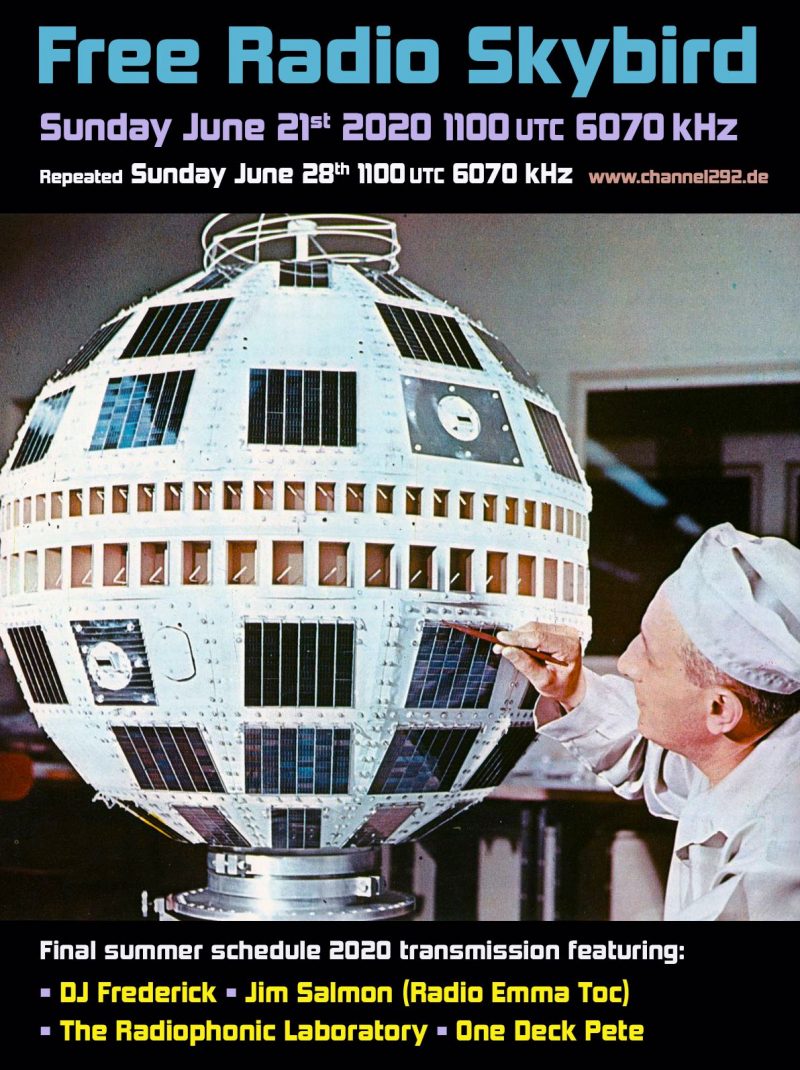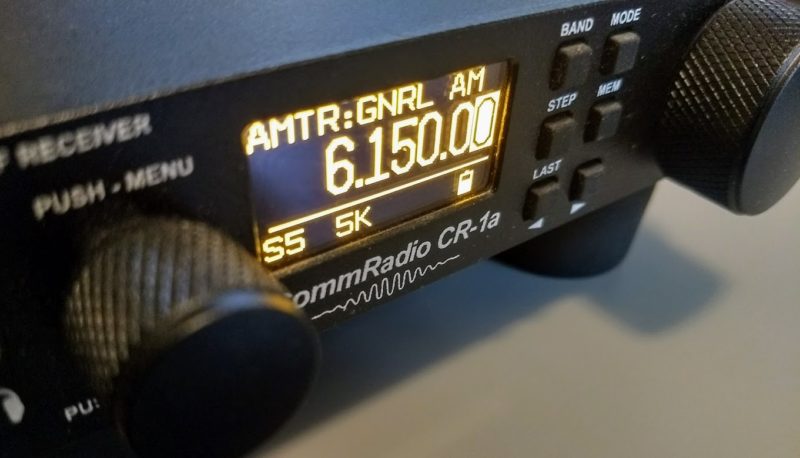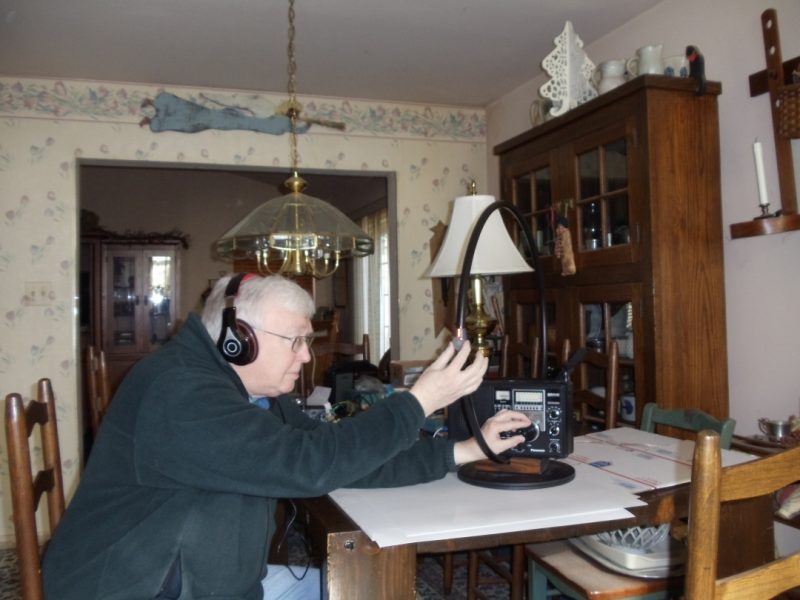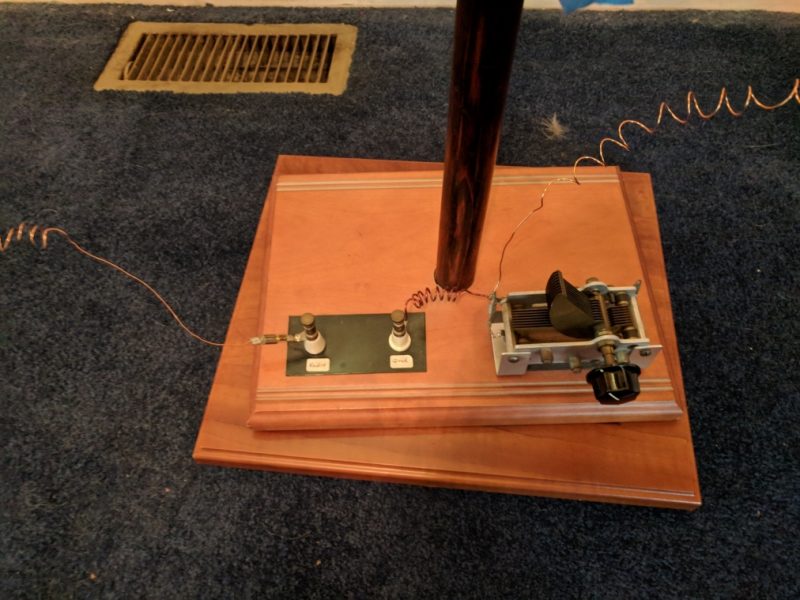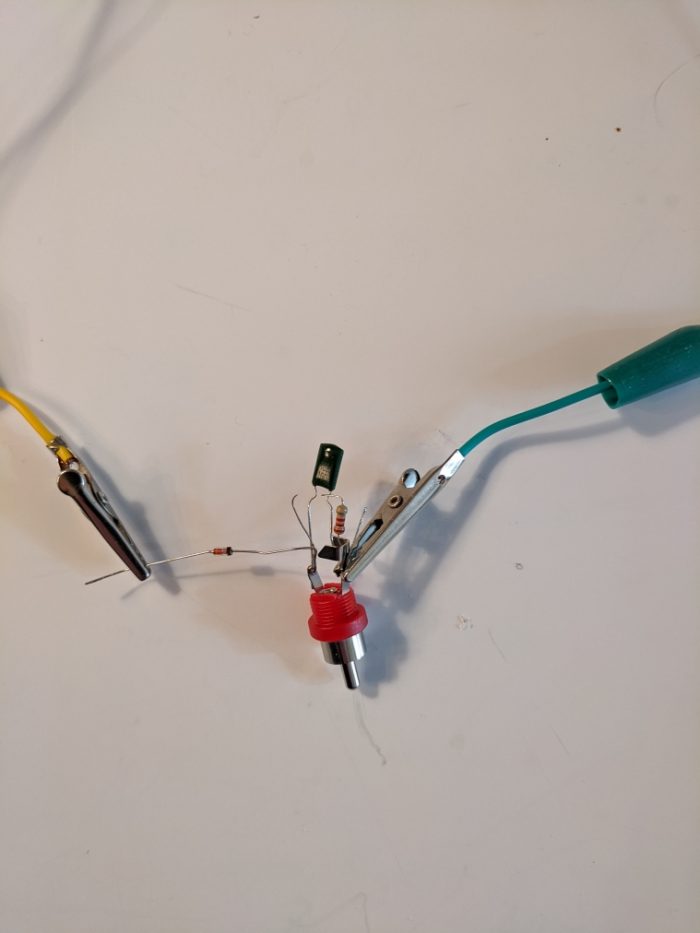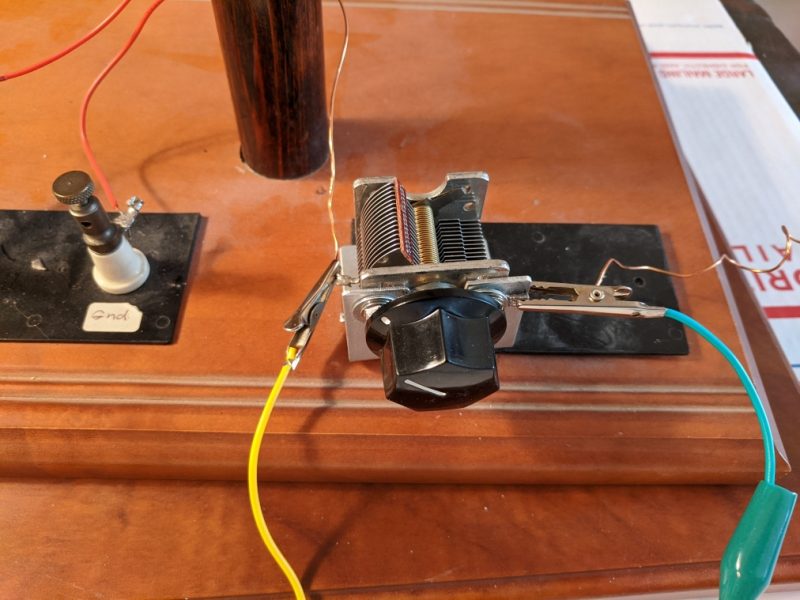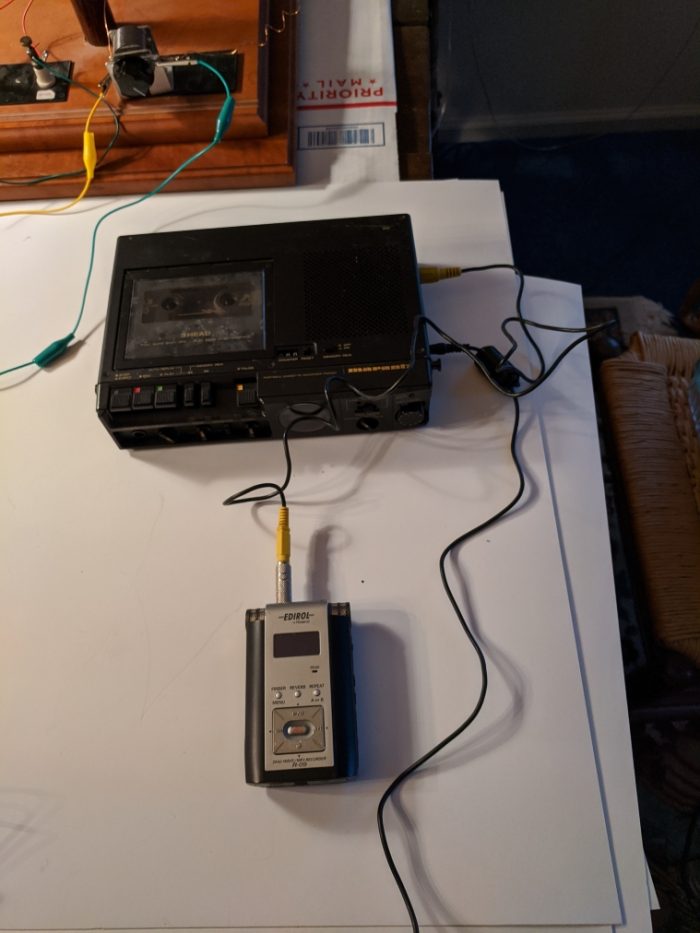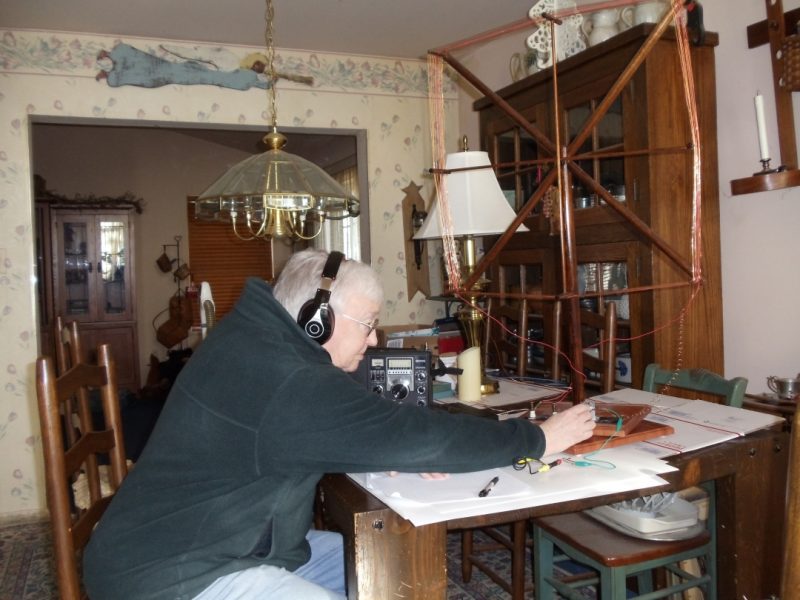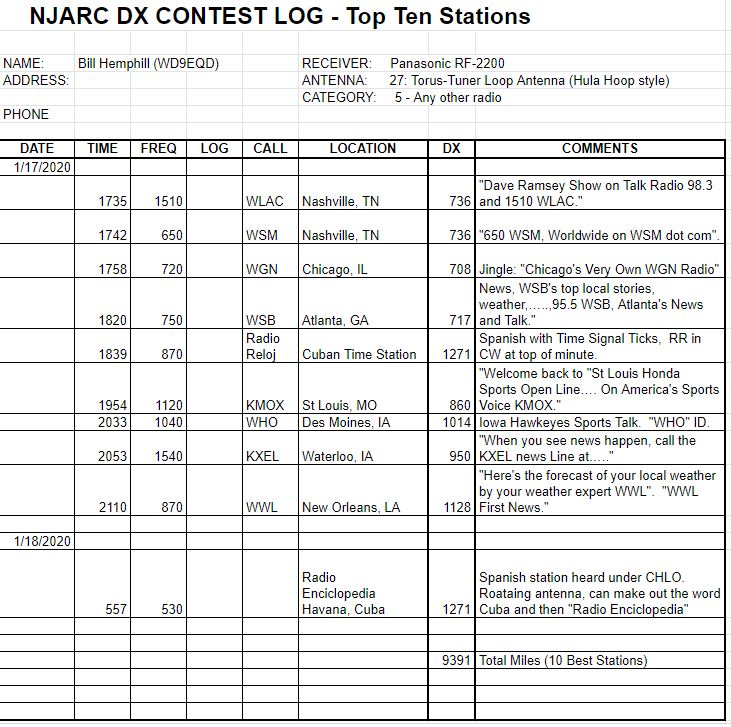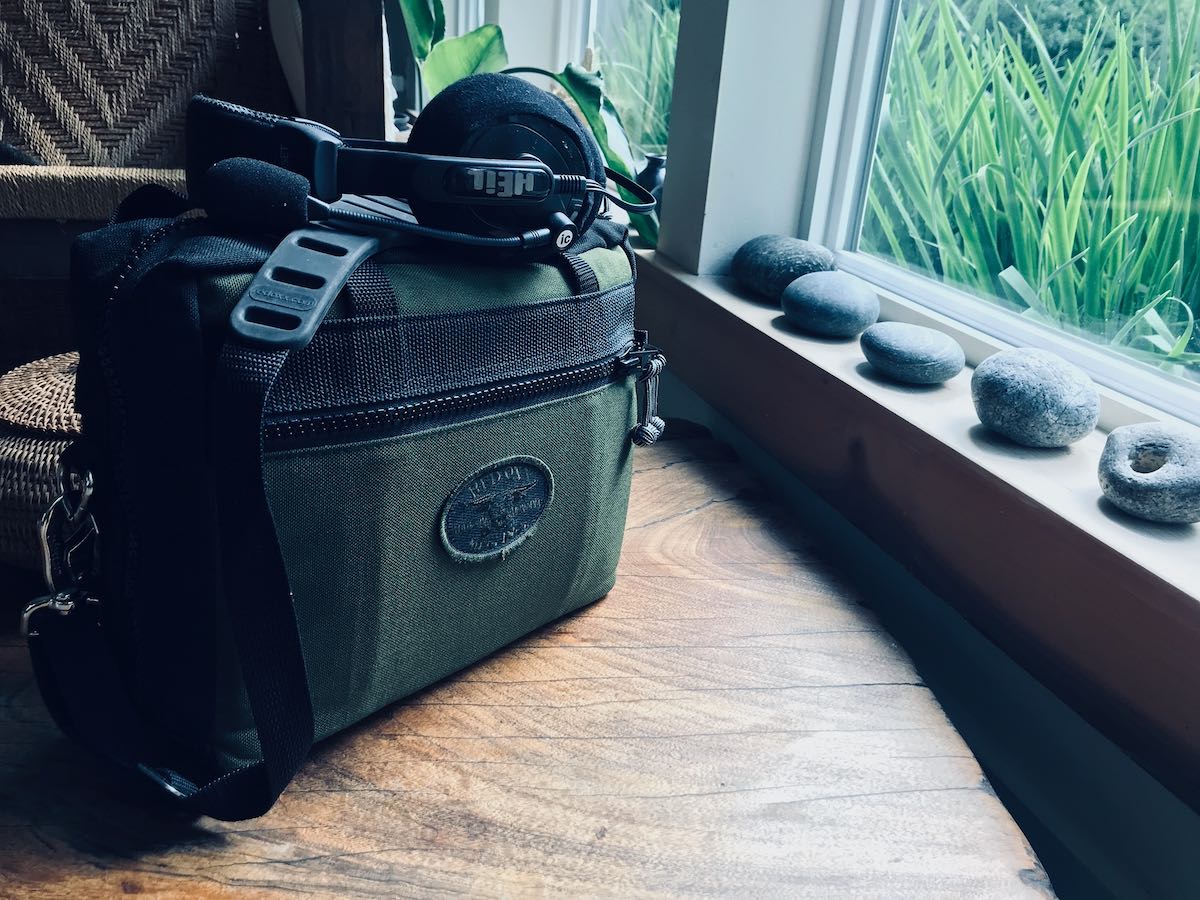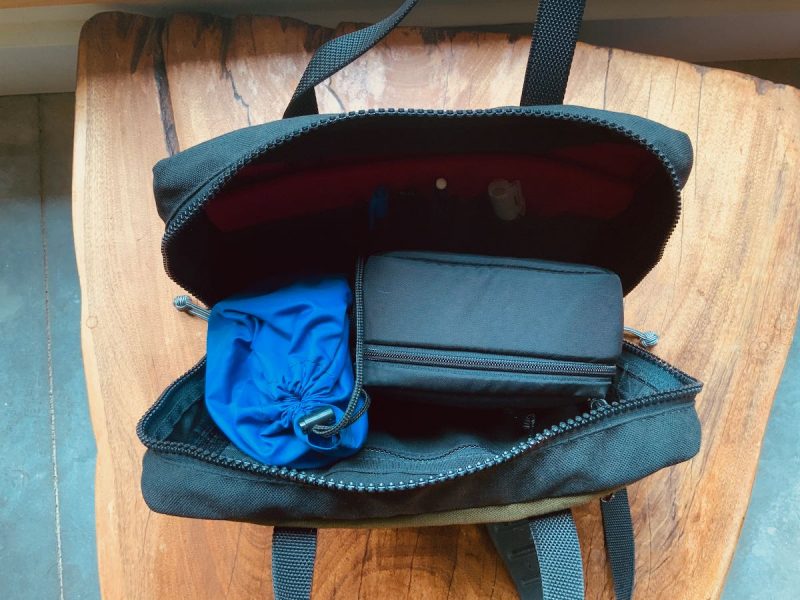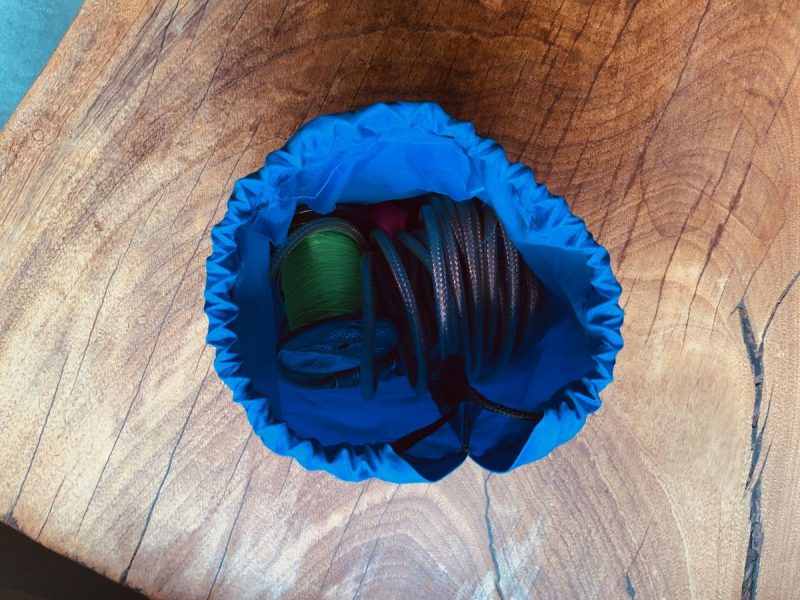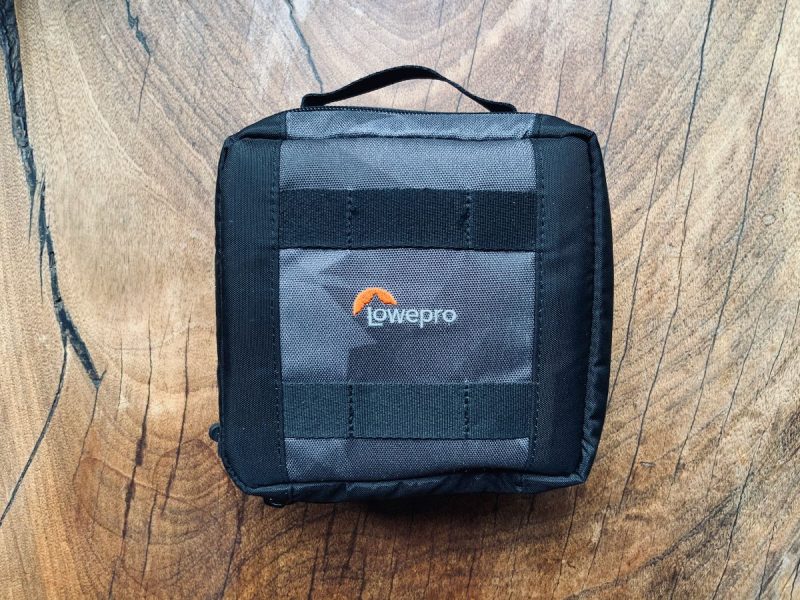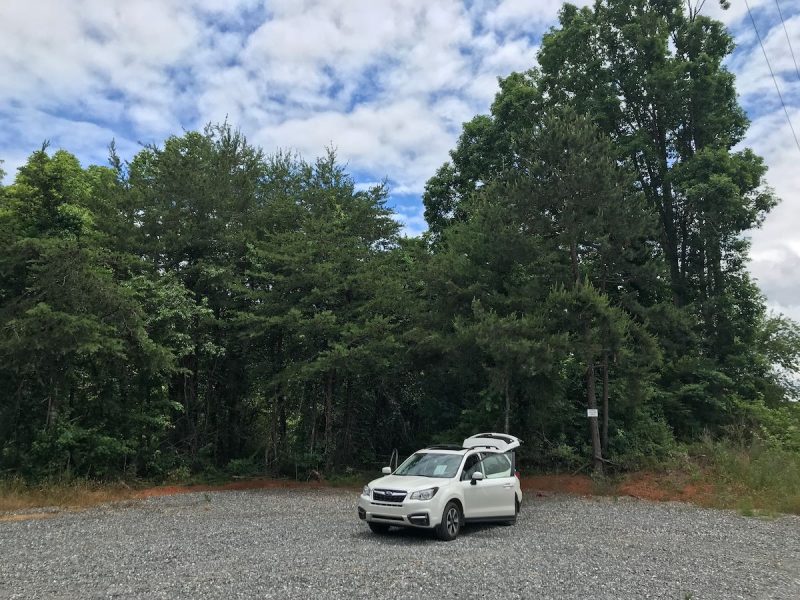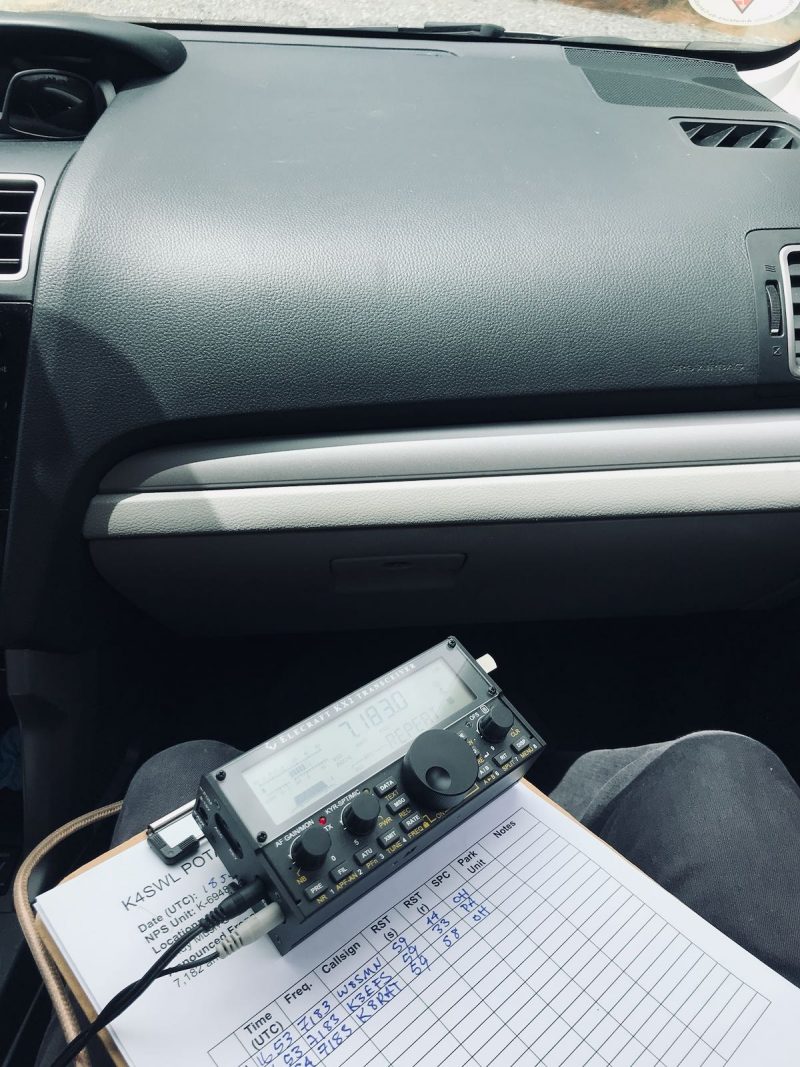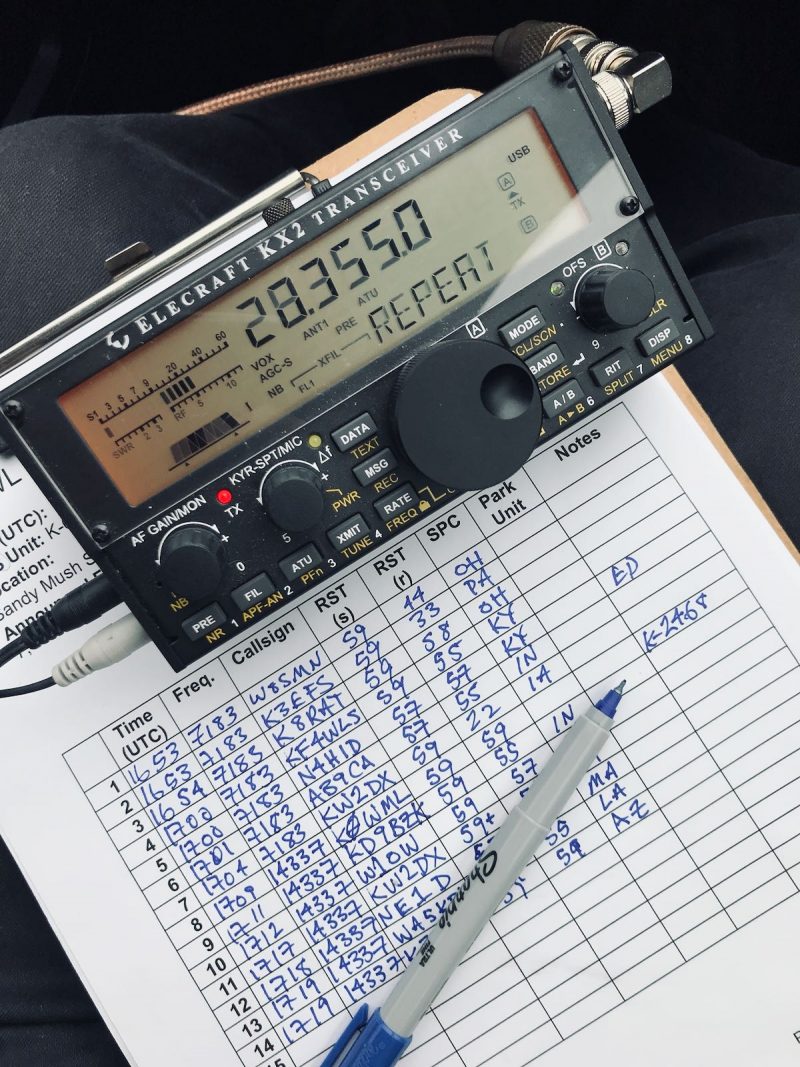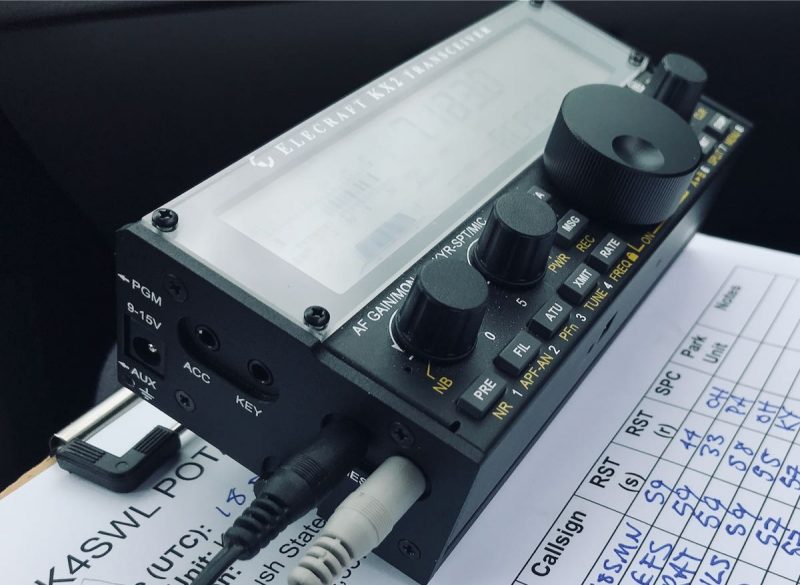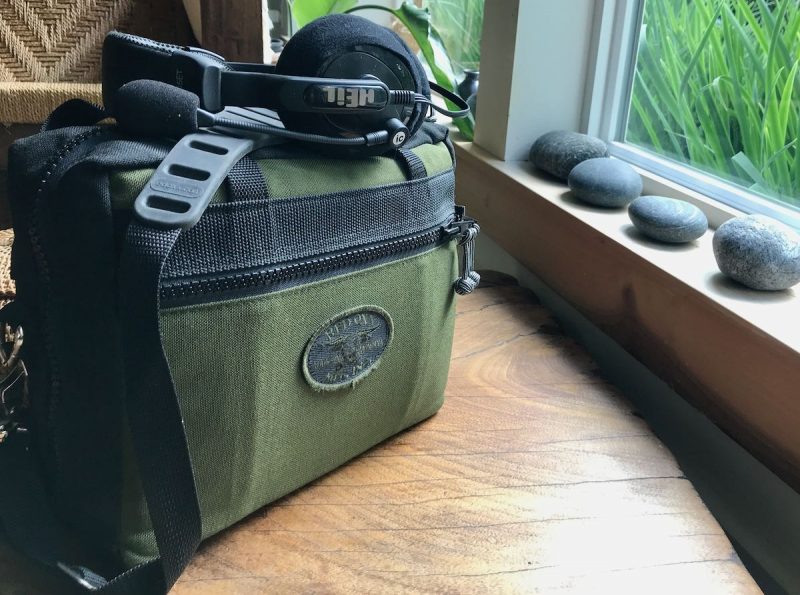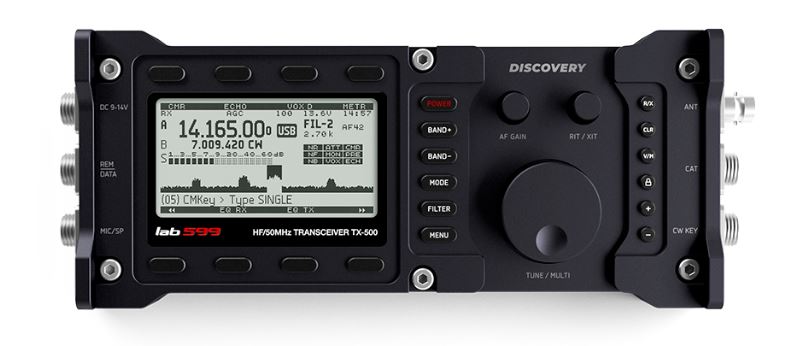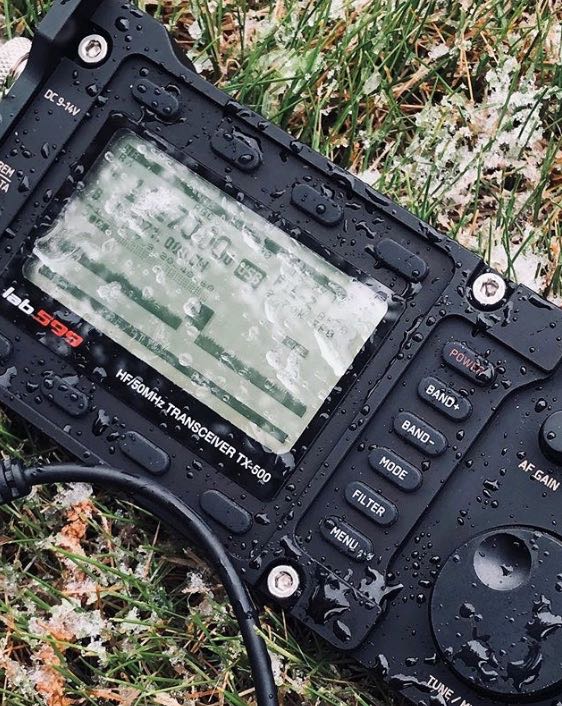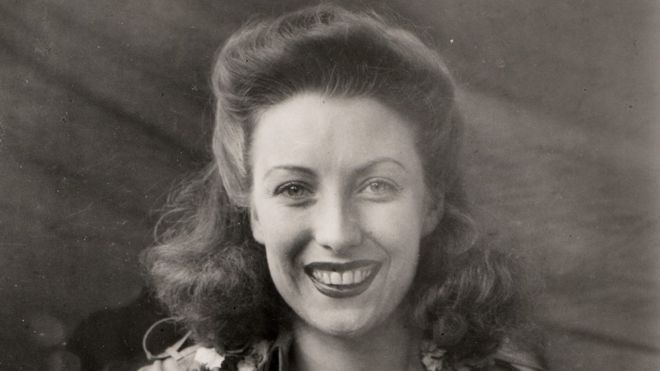SWLing Post contributor, Pete Madtone just shared the Free Radio Skybird graphic above announcing their broadcasts on Sunday, June 21st (today), and repeated on Sunday, June 28th, 2020 at 1100 UTC on 6070 kHz (Channel292). Thanks for the heads-up, Pete!
Category Archives: News
Radio Waves: Chelmsford Radio at 100 Years, First Broadcast Station Site, Alfred Vail, and News Executives Purged from VOA
Radio Waves: Stories Making Waves in the World of Radio
Because I keep my ear to the waves, as well as receive many tips from others who do the same, I find myself privy to radio-related stories that might interest SWLing Post readers. To that end: Welcome to the SWLing Post’s Radio Waves, a collection of links to interesting stories making waves in the world of radio. Enjoy!
Many thanks to SWLing Post contributors John Hoad, Bruce Atchison, and David Korchin for the following tips:
Chelmsford celebrates 100 years of radio with a play (Radio Today)
The city of Chelmsford is celebrating its status as ‘the birthplace of radio’ 100 years ago today with a special live stream of a new play about the Marconi Company tests of 1920.
Britain’s first ever radio entertainment broadcast took place on 15 June 1920, and featured two arias by Australian operatic tenor Dame Nellie Melba, one of most famous singers of the late Victoria era. The broadcast from the Marconi Factory was heard all over Europe and picked up as far away as Canada.
To mark the milestone, Chelmsford City Theatre is streaming a radio play The Power Behind the Microphone: The First Live Radio Entertainment Broadcast about the original broadcast, 100 years to the minute at 7.10pm this evening. International opera star Anna Steiger will recreate the concert given by Madame Melba as part of a radio play based on the story of that fateful night and the breakthroughs that made it possible.[…]
https://youtu.be/h5hO9PsxJwM?t=1384
Site of the World’s First Radio Broadcasting Station (Atlas Obscura)
Three plaques mark the spot where the “forgotten father of broadcasting” worked.
CHARLES “DOC” HERROLD WAS A pioneer. After founding his College of Engineering and Wireless in 1909 inside the Garden City Bank building at 50 West San Fernando Street in San Jose, California, he launched the world’s first radio broadcasting station, which beamed music, news, and notably, advertising to listeners on a regular basis.
Herrold and his team at Station FN, which included his own wife, the world’s first female disc jockey, epitomized the mantra of many a Silicon Valley startup today: “move fast and break things.” His early transmitting devices burned out one after the other, and Herrold had to use a water-cooled microphone. He stole wattage from San Jose’s street car line to power his innovative “Arc Fone” transmitter, and cut a deal with a local store to play records on a Victrola that he would point at the microphone.[…]
Morse’s Partner Argued He Invented Famous Code—to No A-Vail (HistoryNet.com)
Alfred Vail came up with dots and dashes, but Patent Office gave credit to Samuel Morse, the better known inventor
In 1887, 18 years after his father’s death, Stephen Vail took up metaphorical arms to claim Alfred Vail’s place as a key figure in communications history. Starting a war of words that would last decades and end with a declaration carved into stone, the younger Vail bombarded newspaper editors with letters. Alfred Vail’s son insisted that his dad had invented the dot-and-dash system used in telegraphy and known to all, and most gallingly to the younger man, as “Morse” code.
Before telegraphy, the United States had been more a collection of outposts than a nation—when a treaty ended the War of 1812, word from peace talks in Europe between Britain and the United States took so long to creep across the Atlantic that two weeks after the signatures on the peace treaty had dried British and American troops were fighting the Battle of New Orleans. Until telegraphy arrived for good in 1844, information traveled no faster than horses could gallop, trains could roll, or ships could sail. News from Boston reached San Francisco and vice versa by traveling aboard vessels that had to round South America’s southern tip. Only dreamers spoke of rails crossing North America or a canal traversing the Isthmus of Panama. […]
Trump administration purges news execs from U.S. agency meant to counter disinformation, leaving staff fearing more to come (CBS News)
The overnight purge of top news organization officials at the US Agency for Global Media (USAGM) has raised concern among its federal government employees and reporters that their jobs, immigration status, and editorial independence may soon be at risk following the arrival of new CEO Michael Pack.
Pack, who is a conservative filmmaker and close ally of one-time Trump adviser Steve Bannon, and had just stepped into the job after being confirmed by the Republican-led Senate earlier this month, did not respond to a request by CBS News for comment or explanation.
“Pack uses deep state language. Is Bannon calling the shots?”
A USAGM source said this is the question being pondered by executives and journalists inside the organization now.
Four news division heads were removed from their positions, including Middle East Broadcasting Network chief Alberto Fernandez, who is a former US Ambassador, Radio Free Asia’s Bay Fang, Emilio Vazquez of the office of Cuba Broadcasting, and Radio Liberty’s Jamie Fly. Replacements have yet to be named.
Steve Capus, the former CBS and NBC News executive who had been serving as a senior advisor, was also dismissed. Earlier this week, the top director and deputy director at Voice of America resigned as did the head of the Open Technology Fund Libby Liu, which promotes global internet freedoms.[…]
Do you enjoy the SWLing Post?
Please consider supporting us via Patreon or our Coffee Fund!
Your support makes articles like this one possible. Thank you!
2020 BBC Midwinter Broadcast to Antarctica: Time and Frequencies
 The BBC Antarctica winter solstice broadcast will take place on June 21, 2020 at 2130-2200 UTC.
The BBC Antarctica winter solstice broadcast will take place on June 21, 2020 at 2130-2200 UTC.
Many thanks to SWLing Post contributor, Richard Langley, who confirms the three frequencies the BBC plan to use this year:
- 5790 kHz from Woofferton UK
- 7360 kHz from Woofferton UK
- 9580 kHz from Ascension Island
Recording the Midwinter Broadcast has become an SWLing Post community tradition! Read our previous post for more details. We will also publish a reminder on June 21, prior to the broadcast.
Bill’s first DX contest using a Panasonic RF-2200 and a hombrew diode/loop radio
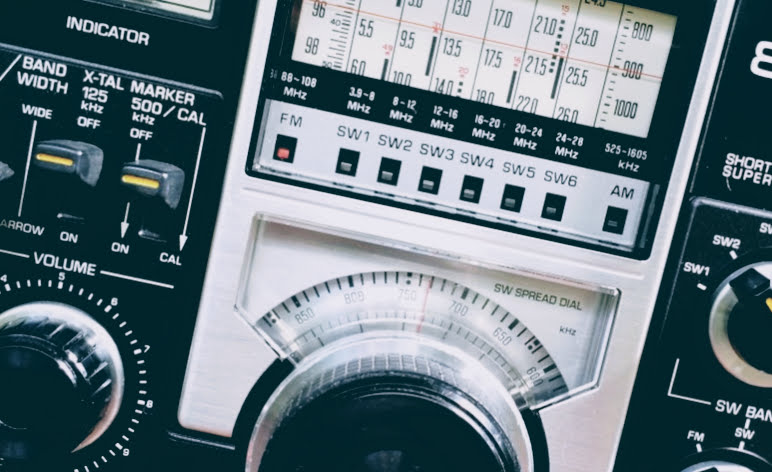 Many thanks to SWLing Post contributor, Bill Hemphill (WD9EQD), who shares the following guest post:
Many thanks to SWLing Post contributor, Bill Hemphill (WD9EQD), who shares the following guest post:
My First DX Contest
by Bill Hemphill, WD9EQD
Being a recent new member of NJARC, this is my first time competing in this contest. I have always been a big fan of BCB DXing and have recently got back into it – especially with the amateur radio bands being in such poor conditions. The acquisition of a couple of Loop antennas plus two Panasonic RF-2200 radios have just enhanced my enjoyment.
For the contest, I used two completely different radios. First was the RF-2200 and second was a spur of the moment creation.
The RF-2200 was its usual good performer. While the RF-2200 has a beautiful built-in rotating bar antenna, I enhanced it with the 27” Torus-Tuner Loop Antenna as made by K3FDY, Edmund Wawzinski. I think I had picked this antenna up at one of NJARC’s swap meets. So I wish to thank whoever it was that was nice enough to bring it and sell it at the meet. I have really enjoyed using it. With this setup, I was hoping that I might be able to pull in Denver, Salt Lake City and maybe even a Mexican station, but it was a complete bust on them. But I did have a nice surprise in receiving the Cuban station Radio Enciclopedia on 530 in addition to the usual Radio Reloj time signal station. Following is photo of it in operation:
Originally, I had thought that my second contest entry would be done with a 1962 Sony TR-910T three-band transistor radio. This radio has a fairly wide dial along with a second fine-tuning knob which would be a big help. I would have again used the 27” hula-hoop antenna.
But I made the nice mistake of running across Dave Schmarder’s Makearadio website:
Dave’s site is a wonderful resource for creating your own Crystal, Tube, and Solid State radios as well as Audio Amplifiers and Loop Antennas. While going down the rabbit hole of his site, I ran across his Loop Crystal Set, #19 Crystal Radio:
http://makearadio.com/crystal/19.php
What grabbed my attention was the wood frame loop antenna which is similar to one I had acquired a couple of years ago at a ham fest:
It was a really nicely constructed, nice swivel base.
I replaced the tuning capacitor with one that has a 6:1 ratio.
At this point I started thinking that I could create something similar with my loop.
I randomly grabbed a diode from my parts box. Not sure what the exact model is. (I later found out that it was an IN-34 which is what I was hoping it was.) Then quickly soldered the diode, a resistor and capacitor to a RCA plug:
I then proceeded to use some jumper cables and just clip it to the tuning capacitor on the antenna base:
The RCA plug was then the audio out (I hope) from the radio.
I quickly realized that I did not have a crystal headset or any headset that would reproduce any audio. So I used an old Marantz cassette recorder to act as an amplifier. Fed it into the mic jack and then tried to listen to the monitor out. Bingo – I could pick up or local station on 1340 really weak.
So I then fed the audio from the Marantz into a Edirol digital recorder. Now I was getting enough audio for the headphones plus could make a recording of the audio.
At last I was receiving some signals. To boost the audio some more I removed the resistor from the circuit.
I found out the I could only tune from about 530 to 1350. I probably needed to clip the lead on one of the loop turns, but I really wanted to see how it would do at night. I spent several hours and was just totally amazed at how well it performed and how good the audio was. The hardest part was when there were very strong signals on the adjacent frequency. What I found really interesting was that it was not linear in its tuning. At the low end of the band the stations were more spread out than at the higher end. This made tuning fairy easy at the low end and very touchy at the high end. I was able to hear a couple of Chicago stations along with Atlanta and St. Louis.
Here’s photo of it in action:
I have created an audio file of the station ID’s heard with the diode/loop radio. The audio file is on the Internet Archive at:
https://archive.org/details/bcbstationidsondioderadio
I had a lot of fun in the contest and especially enjoyed trying something really different with the diode/loop radio. Now I have a whole year to try to think up something really creative for next year’s contest.
Absolutely brilliant, Bill! I’m so happy to see that your ham fest homebrew loop has served you so very well in a contest. I love how you pulled audio from your homebrew, make-shift diode radio as well–using your audio gear in a chain for amplification obviously worked very well.
Thanks so much for sharing your experience, Bill!
Proper Radio Prepping: Keep a kit that is always ready to hit the field!
Yesterday, my family packed a picnic lunch and took a drive through Madison County, North Carolina. It was an impromptu trip. Weather was forecast to be pretty miserable that afternoon, but we took the risk because we all wanted to get out of the house for a bit.
Although that morning I had no intention of performing a Parks On The Air (POTA) activation, my family was supportive of fitting in a little radio-activity, so I jumped on the opportunity!
A quick glance at the POTA map and I determined that the Sandy Mush State Game Land (K-6949) was on our travel route. Better yet, the timing worked out to be ideal for a lunch picnic and before most of the rain would move into the area.
Ready for radio adventure
I had no time to prepare, but that didn’t matter because I always have a radio kit packed, fully-charged, and ready for the field.
My Red Oxx Micro Manager EDC pack (mine is an early version without pleated side pockets) holds an Elecraft KX2 field and antenna kit with room to spare (see photo at top of page).
This 20 year old blue stuff sack is dedicated to antenna-hanging. It holds a reel of fishing line and a weight that I use to hang my end-fed antenna in a tree or on my Jackite telescoping fiberglass pole. The sack also accommodates a 10′ coax cable.
The Elecraft KX2 transceiver, EFT Trail-Friendly Antenna, hand mic, CW paddles, C.Crane earphones, and wide variety of connectors and cables all fit in this padded Lowe Pro pack:
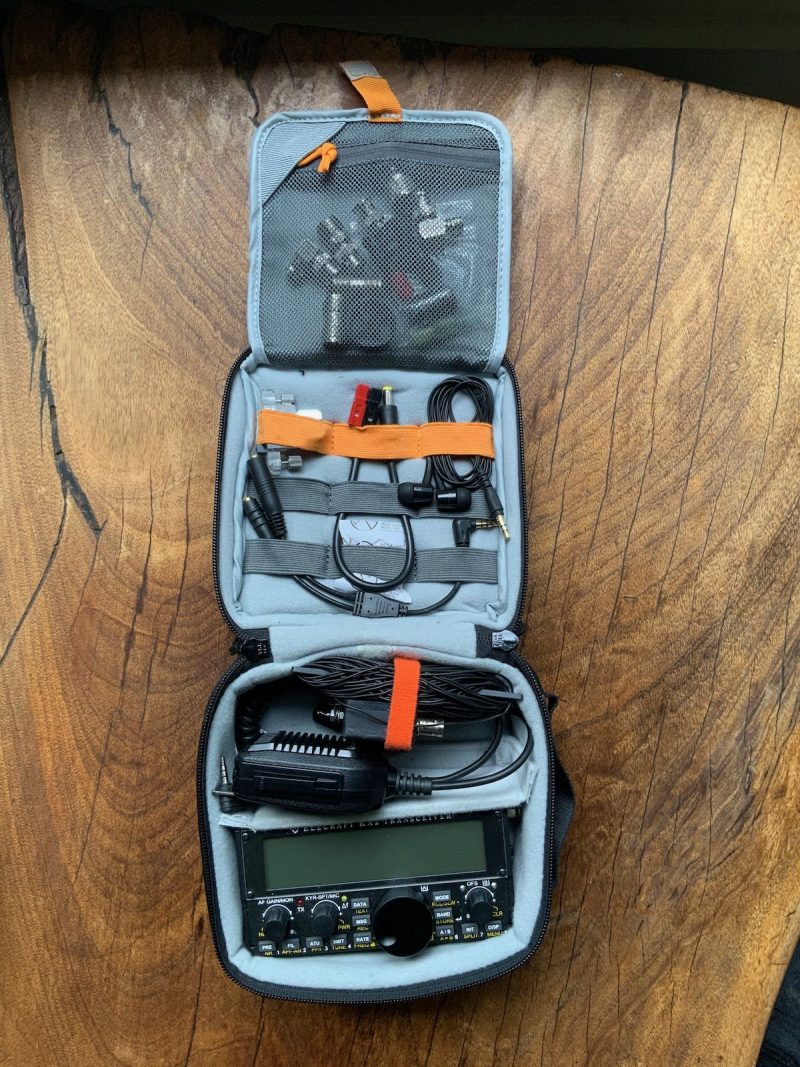 The advantage to having a simple, organized radio kit at the ready is that everything inside has its own dedicated space, so there’s no digging or hunting for items when I’m ready to set up and get on the air.
The advantage to having a simple, organized radio kit at the ready is that everything inside has its own dedicated space, so there’s no digging or hunting for items when I’m ready to set up and get on the air.
This level of organization also makes it easy to visually inspect the kit–missing items stand out.
Yesterday I parked our car at one of the Sandy Mush Game Land parking areas, deployed my field antenna, and was on the air in a matter of seven minutes at the most.
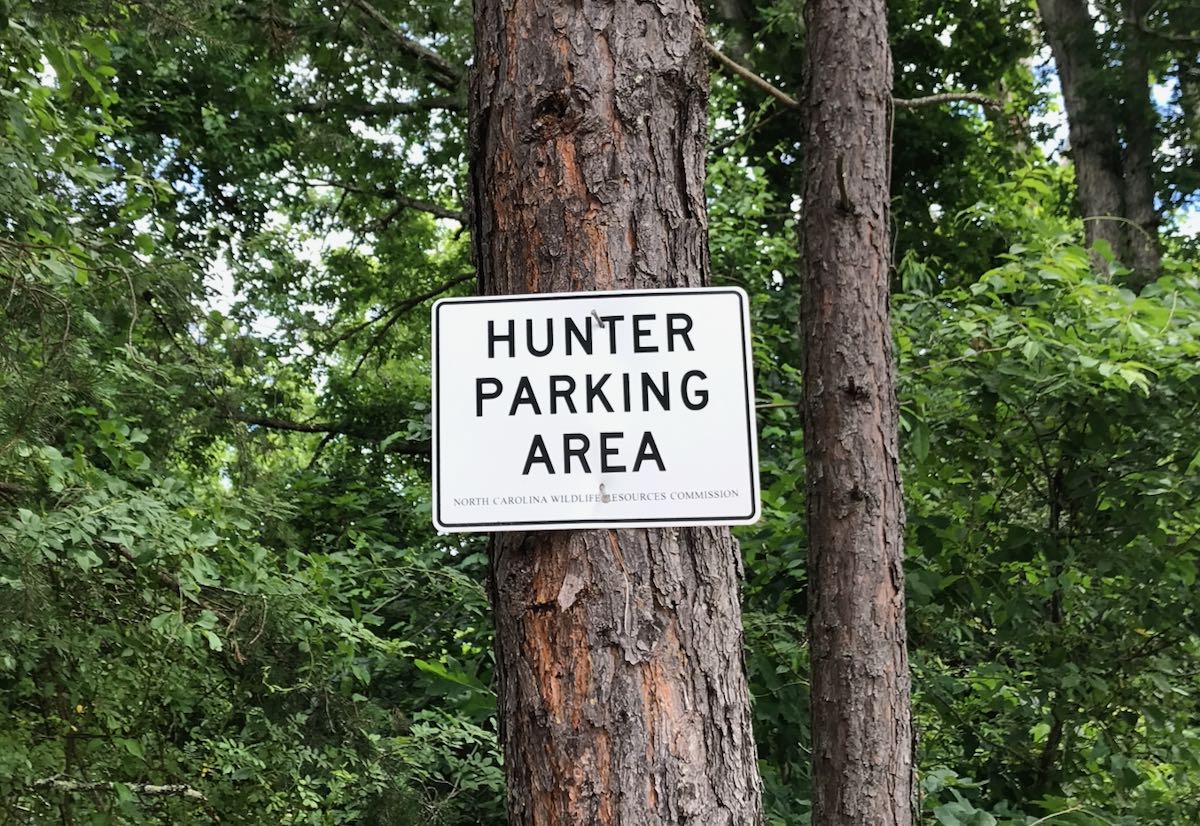
Technically, this should read “Activator” parking area! (A questionable inside joke for POTA folks!)
We planned for heavy rain showers, so I fed the antenna line through the back of my car so that I could operate from the passenger seat up front.
I also brought my Heil Proset – K2 Boom Headset which not only produces better transmitted audio than the KX2 hand mic, but it frees up my hands to log stations with ease. This is especially important when operating in the front seat of a car!
The great thing about the KX2 is that it’s so compact, it can sit on my clipboard as I operate the radio (although typically I have an elastic strap securing it better). Since all of the KX2 controls are top-mounted, it makes operation a breeze even in winter weather while wearing gloves.
Since I routinely use the KX2 for shortwave radio broadcast listening as well, I know I always have a radio “locked and loaded” and ready to hit the air. My 40/20/10 meter band end-fed antenna works well for the broadcast bands, as long as there is no strong local radio interference (RFI). When I’m faced with noisy conditions, I pack a mag loop antenna as well.
What’s in your radio go-kit?
Having a radio kit stocked and ready to go on a moment’s notice gives me a great sense of security, and not just for recreational ham and shortwave radio listening reasons.
Sometimes I travel in remote areas by car where I’m more than an hour away from the nearest town and where there is no mobile phone coverage.
If my car breaks down, I know I can always deploy my radio kit and get help from the ham radio community in a pinch. Herein lies the power of HF radio!
If you haven’t built a radio go-kit, I’d highly recommend doing so. Although I’m a bit of a pack geek, keep in mind that you don’t need to purchase special packs or bags for the job. Use what you already have first.
I’m plotting a detailed post about the anatomy of an HF radio field kit. In the meantime, I’m very curious how many of you in the SWLing Post community also have a radio kit at the ready–one based on a transceiver or receiver. Please comment!
Better yet, feel free to send me details and photos about your kit and I’ll share them here on the Post!
Do you enjoy the SWLing Post?
Please consider supporting us via Patreon or our Coffee Fund!
Your support makes articles like this one possible. Thank you!
Any news about the labratory599 TX-500 Discovery QRP transceiver–?
A number of SWLing Post readers have been contacting me this month regarding the lab599 TX-500 Discovery QRP general coverage transceiver. Since its announcement around this time last year, a number of radio enthusiasts have been seeking any updates or information regarding price and availability.
Spoiler alert: Sadly, I have no meaningful updates at present.
Here’s what I do know…
The product page for the TX-500 now has more photos and specifications. They also added a downloads page with the manual, software, and firmware. [Update: I removed links to these pages because some systems report that the site may have gotten a malware injection–common with WordPress sites.]
Many of you have asked if the TX-500 will be “vaporware.” Possibly, but I don’t believe so. I suspect lab599 is keeping everything under wraps until they have firm information regarding availability and pricing. I’m actually happy they haven’t asked for pre-orders with cash deposits because that always adds a layer of risk with products that are not yet in production. At this point, no consumers have an investment riding on this future rig.
Of course, I imagine the Covid-19 pandemic could also affect their supply chain.
Videos
There have been two new videos posted on the lab599 YouTube page this month.
The first video shows the TX-500 in the field and the operator (R9JC) making a contact in CW:
The second video shows the TX-500 display as the operator tunes through the CW portion of the 20 meter band with the 50 Hz filter engaged:
Following TX-500 updates closely…
I am following TX-500 updates very closely. Since I’m primarily a “field” ham radio operator, the idea of a weather-proof, rugged, QRP transceiver is very appealing. Seriously…just take my money!
Of course, being first and foremost a shortwave radio listener, I’m also very interested how the TX-500 might play on the broadcast bands in AM mode.
You can bet I will review the TX-500 as soon as it’s available.
I recently sent another inquiry to lab599. If I receive any meaningful information, I’ll share it here on the SWLing Post. Simply follow the tag: TX-500
Radio Waves: RIP Dame Vera Lynn, 1928 London Noises, Repoliticizing VOA, and Shortwave Trading At the Speed of Light
Radio Waves: Stories Making Waves in the World of Radio
Because I keep my ear to the waves, as well as receive many tips from others who do the same, I find myself privy to radio-related stories that might interest SWLing Post readers. To that end: Welcome to the SWLing Post’s Radio Waves, a collection of links to interesting stories making waves in the world of radio. Enjoy!
Many thanks to SWLing Post contributors Tracy Wood, Dennis Dura, David Goren, and Kim Elliott for the following tips:
Obituary: Dame Vera Lynn, a symbol of resilience and hope (BBC News)
Dame Vera Lynn, who has died at the age of 103, was Britain’s wartime Forces’ Sweetheart, and remained one of the country’s most potent symbols of resilience and hope.
With songs such as We’ll Meet Again and The White Cliffs of Dover, she inspired both troops abroad and civilians at home during World War Two.
As Britain’s cities came under attack, her wistful songs, with their messages of yearning and optimism, were heard in millions of British homes.
And 75 years later, the country turned to her once again as it faced another stern test.[…]
London street noises 1928 (Sound and History)
THERE ARE NO BBC radio recordings surviving from before 1931, so the job of representing the 1920s falls to this curiosity from the Columbia Graphophone Company. It’s a 12” 78rpm disc made in 1928 in association with the Daily Mail newspaper.
It seems likely that the disc was somehow tied in with a Daily Mail campaign over urban traffic noise. The commentator on both sides of the disc is a man named Commander Daniel and he doesn’t approve of everything he hears in the city streets.
The recordings were made from single, static locations in Leicester Square and Beauchamp Place on Tuesday 11th and Thursday 20th September respectively. Columbia probably used a recording van equipped with a disc-cutter.[…]
Repoliticizing Voice of America (The Hill)
When Michael Pack takes over as the first politically-appointed CEO of the U.S. Agency for Global Media, his first task will be to comprehend the bewildering array of international broadcasting entities under the USAGM. This includes two government agencies: Voice of America and Office of Cuba Broadcasting (Radio and TV Martí), and four government funded corporations: Radio Free Europe/Radio Liberty, Radio Free Asia, Middle East Broadcasting Networks (the Arabic-language Alhurra and Radio Sawa) and the anti-censorship Open Technology Fund. Within this structure are broadcasting outlets that straddle two entities, such as the Russian-language Current TV. All told, the entities distribute content in 61 languages.
When past that hurdle, Pack must then decide if he wants to maintain the journalistic independence of USAGM’s entities, or if he wants to move them towards advocacy of the administration’s policies.[…]
Companies Pitch Shortwave Radio to Shave Milliseconds Off Trades (Bloomberg)
High-frequency traders will famously do almost anything to get the latest market data and send their buy and sell orders a few milliseconds ahead of the competition. They blasted through mountains to build the most direct fiber-optic routes possible between exchanges in a competition that transformed global markets and was made famous by Michael Lewis’s book Flash Boys. Soon, pinging light through glass fiber at more than 124,000 miles per second wasn’t fast enough—the glass slows things down—so traders moved on to microwave transmitters that send signals through the air.
But that has problems, too. Microwaves travel only roughly as far as the eye can see before they peter out and need a signal boost. Now two rival market telecommunications companies have signed a pact that they say will give traders more access to experimental wireless signals which can travel across oceans.
To do that, signals need a longer wavelength—known as a shortwave rather than microwave—that bounces between the water and atmosphere. It’s an imperfect solution. The waves can handle only a fraction of the data that fiber can, carrying about a kilobit per second vs. gigabits. And some signals can be lost.
Raft Technologies Inc., a startup based in Tel Aviv, says the trade-offs are worth it. Raft says it can send data over shortwave from Chicago to Frankfurt in 31.4 milliseconds, which it says is about 4.5 milliseconds faster than the best available fiber route. That’s an eternity in an industry that tends to measure improvements by the thousandth of a millisecond. The company says the signal is about 85% reliable, compared with 100% for fiber. Clients can use a fiber line in parallel as a fail-safe measure.[…]
Do you enjoy the SWLing Post?
Please consider supporting us via Patreon or our Coffee Fund!
Your support makes articles like this one possible. Thank you!

